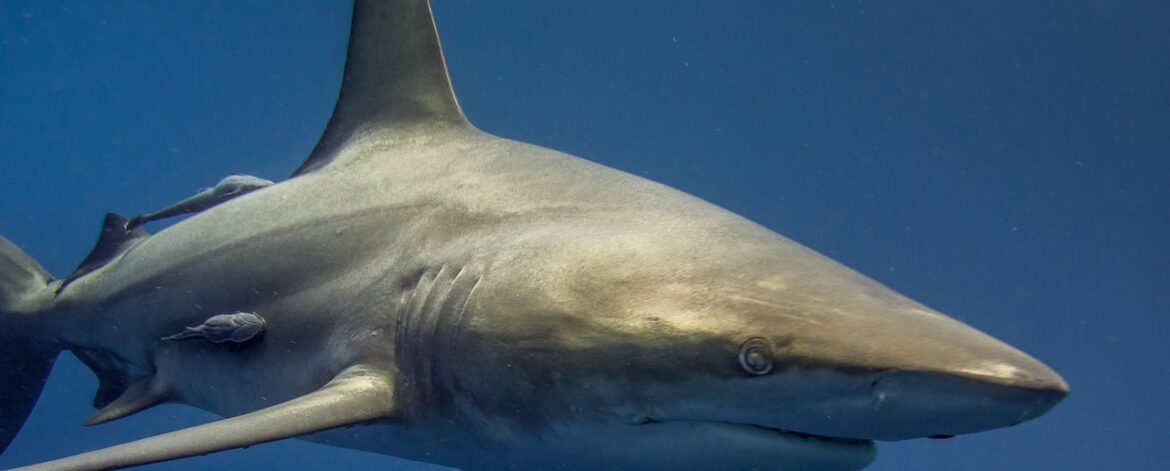Sharks are incredible creatures which often have a bad reputation. Unfortunately humans kill thousands of sharks every year and due to climate change they are facing many challenges in the ocean. If you would like to be the change you can play a small role helping sharks in destinations around the world.
Best Shark Volunteering Programs
Help these beautiful animals by volunteering at a conservation project. In some destinations like South Africa you can join projects and be put you in a cage, lowered into the ocean, and put you face to face with the ragged jaws of a Great White Shark.
About Sharks
Shark are a fish species with a full cartilaginous skeleton and a streamlined body. Sharks live in oceans and seas, and even in some rivers and lakes.
There are about 368 different species of sharks, divided into 30 families. They range in size from the size of a person’s hand to the size of a bus. The biggest shark is the whale shark, which can be up to 50 feet (15 m) long. The smallest shark is the Dwarf Lantern Shark, that grows to about 15 cm. Most sharks live for 20 to 30 years.
Sharks have keen olfactory senses. They also have a sensory organ called the “ampullae of Lorenzini” which they use to “feel” the electrical field coming from its prey. Sharks are carnivores. Most of them are solitary hunters, but even solitary sharks meet for breeding or on rich hunting grounds. Sharks eat fish, squid, shellfish, marine mammals, plankton and even other sharks. Sharks don’t chew their food and may have up to 3,000 teeth at one time.
Interesting Facts about Sharks
- Fully-grown sharks range in size from 8 inches long to 45 feet long.
- Sharks keep growing new teeth. Some species of sharks may shed as many as 30,000 teeth in a lifetime.
- A shark eats about 1 % to 1 0% of its total body weight per week.
Reproduction
There are three ways in which shark pups are born:
- oviparity: eggs incubation takes from 6 to 15 months depending on the species (horn shark, cat shark)
- viviparity: young sharks are born alive (hammerhead shark, bull shark)
- ovoviviparity: embryo develops in egg within the female’s body (great white shark)
Sharks do not care for their babies after they are born.
Great White Sharks
The white shark (Carcharodon carcharias) is also known as the great white shark.
This predator is solitary and can grow up to 6.6 meters in length. It is a streamlined swimmer, and has a torpedo-shaped body with a pointed snout. White sharks have three main fins: the dorsal (on back) and two pectoral fins (on the sides).
When the white shark is near the surface, its dorsal fin and part of the tail are visible above the water. It is important to know that only the underbelly of the great white shark is white; its top surface is gray to blue gray.
Great white sharks are most frequently sighted off the coasts of the United States, Australia, and South Africa.
The white sharks inhabit coastal and offshore waters of the continental shelf. They may be found in temperate waters worldwide, and also in tropical and sub-tropical waters. White sharks are solitary animals, but occasionally they have been spotted travelling in pairs.
Like all sharks, white sharks have a sensory organ called the “ampullae of Lorenzini” which they use to “feel” the electrical field coming from its prey. Also, the great white’s nostrils can smell one drop of blood in 25 gallons (100 liters) of water.
White sharks eat fish such as salmon, hake, halibut, mackerel and tunas, and also marine mammals such as harbor porpoises and harbor seals. The great white shark continually looses its teeth and replaces them with new ones. The white sharks inhabit coastal and offshore waters of the continental shelf. They may be found in temperate waters worldwide, and also in tropical and sub-tropical waters. White sharks are solitary animals, but occasionally they have been spotted travelling in pairs.
Reproduction
This Great White Shark is ovoviviparous. Females give birth to 4 to 14 live pups. Shark pups can be over 5 feet (1.5 m) long at birth. They swim away from the mother immediately after birth, and there is no maternal care-giving.
White sharks reach sexual maturity at 10 to 12 years of age. The females only reproduce twice in her whole life. In the fall, white shark females migrate to warmer waters (southern California for example) to give birth.
Great White Shark Facts
- The biggest great white shark on record was 23 feet (7 m) long.
- The great white shark has 3,000 teeth at any one time. A white shark may grow and use over 20,000 teeth in its lifetime.
- Most great white attacks are not fatal.
- White sharks cannot swim backwards but they can jump out of the water.
- No one knows the life span of the great white shark.
- Great whites do not chew their food.
- Although it is not the largest shark, the great white is the largest predatory shark.
- White sharks must swim constantly or they will sink. They have no gas filled swim bladder to keep them afloat like all bony fish do.
- The white shark can poke its head up out of the water.

